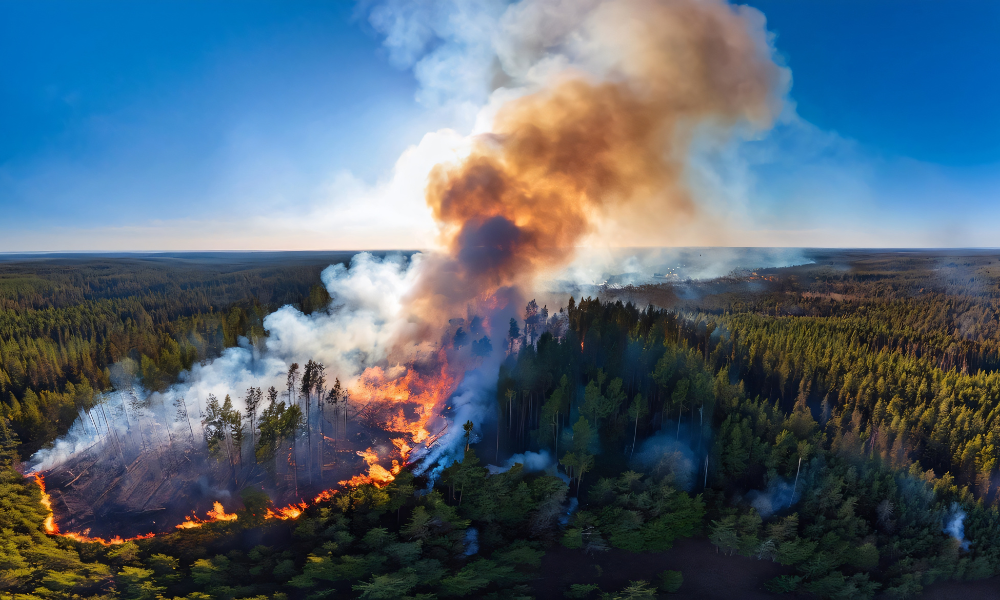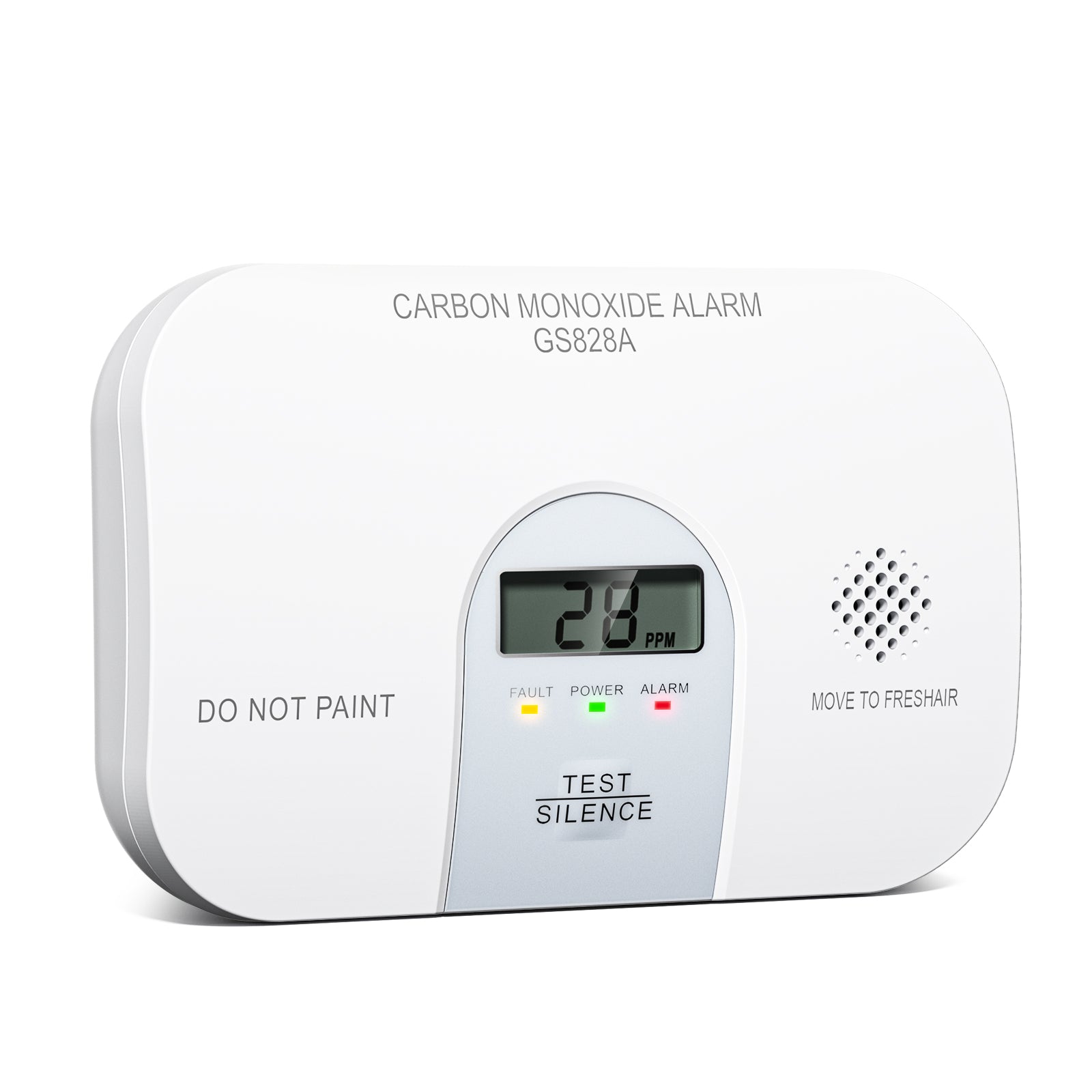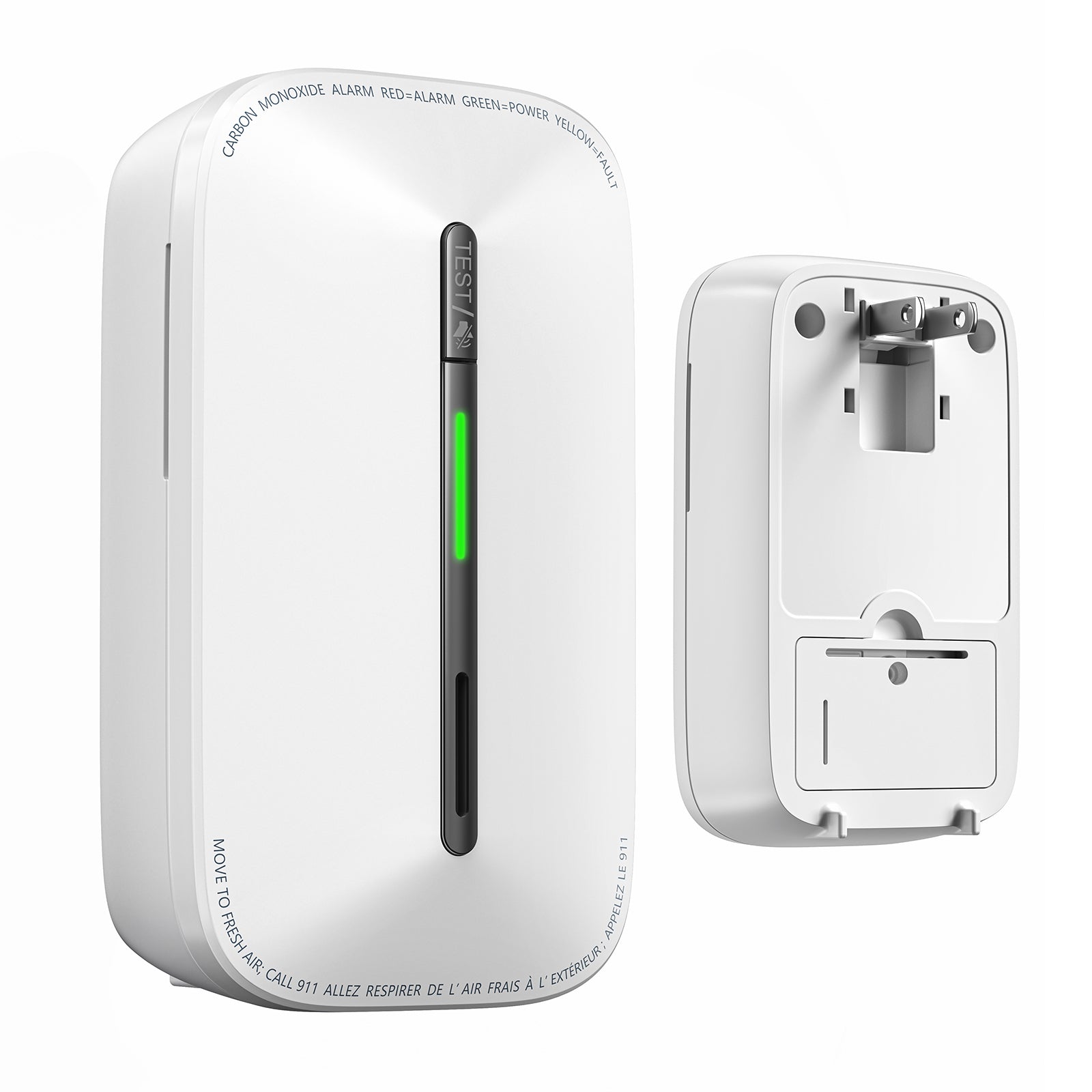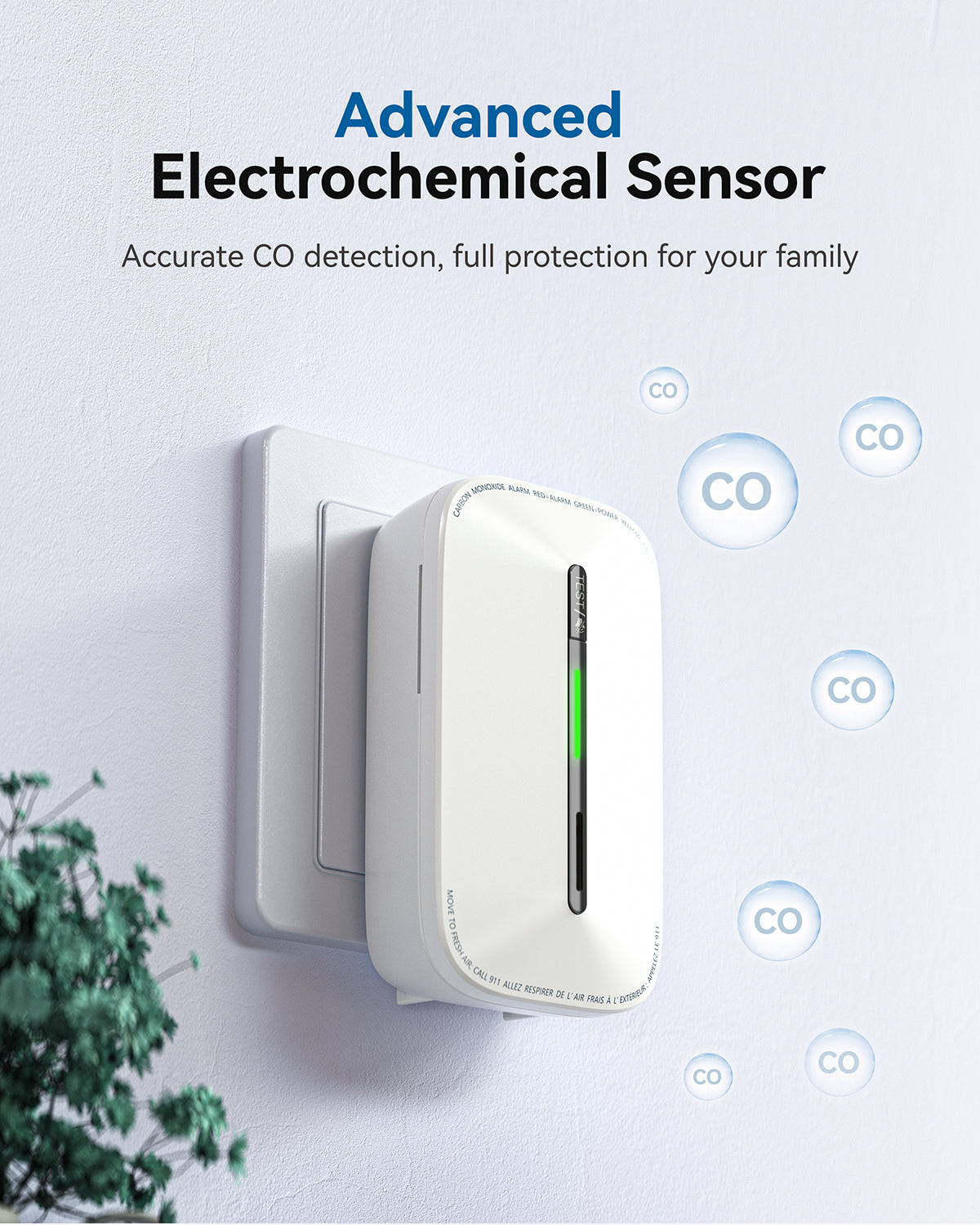When you think about household hazards, your mind might first jump to fires, natural disasters, or burglars. But there's another invisible, odorless, and tasteless danger lurking in many homes: carbon monoxide (CO). Often referred to as the "silent killer," carbon monoxide is responsible for hundreds of fatalities every year, yet many of us are unaware of the risks it poses until it's too late.
In this article, we aim to raise awareness about the risks of carbon monoxide, explain its dangerous concentration levels, and explore how it affects your health. Our goal is to provide you with the information you need to keep your home safe—from understanding CO’s potential dangers to practical steps you can take to protect yourself and your loved ones.
What Is Carbon Monoxide (CO)?
Carbon monoxide is a colorless, odorless, and tasteless gas that is produced by the incomplete burning of carbon-containing fuels. Because it doesn’t have a smell or any obvious signs of its presence, people can unknowingly breathe it in without realizing it. This is particularly dangerous in closed or poorly ventilated spaces, where CO can accumulate and reach hazardous levels.
Common sources of carbon monoxide in the home include:
- Kitchen stoves and ovens: Especially those powered by natural gas or propane.
- Water heaters: Gas-powered water heaters can also produce CO when combustion is incomplete.
- Fireplaces and space heaters: Wood-burning stoves and gas-fired heaters can be significant sources of CO, especially when they are not well-ventilated.
- Car exhaust: Running a car in an attached garage, even if the door is open, can result in CO building up inside your home.
These everyday appliances can pose a serious risk if they aren’t properly maintained or ventilated, allowing harmful levels of CO to infiltrate your living space.
Why Is Carbon Monoxide Dangerous?
The real danger of carbon monoxide stems from how it interacts with the body. Once inhaled, CO is absorbed into the bloodstream and binds with hemoglobin—the protein in red blood cells that carries oxygen throughout the body. This forms a compound known as carboxyhemoglobin, which prevents hemoglobin from transporting oxygen.
The result? Oxygen deprivation. With less oxygen being delivered to vital organs, the body begins to suffer, and serious health effects can occur.
-
Symptoms of carbon monoxide poisoning: The early signs of CO exposure can be subtle and easily mistaken for flu-like symptoms, such as:
- Headache
- Dizziness or lightheadedness
- Nausea and vomiting
- Shortness of breath
As CO levels rise, the symptoms worsen, and individuals may experience confusion, unconsciousness, and in extreme cases, death.
According to the Centers for Disease Control and Prevention (CDC), every year in the U.S., over 400 deaths are caused by unintentional carbon monoxide poisoning, with more than 20,000 people requiring medical attention. The risks are even higher in homes with malfunctioning or improperly ventilated heating systems, stoves, and other gas-powered appliances.
The Dangerous Concentrations of Carbon Monoxide (CO)
Carbon monoxide (CO) can be harmful at different levels of concentration. While it’s a silent and invisible threat, understanding its varying concentrations can help you better protect yourself and your loved ones. Here's a breakdown of the dangerous concentrations of CO and the potential health risks they pose.
Low Concentrations (0-50 ppm)
At low concentrations of carbon monoxide—typically in the range of 0 to 50 ppm (parts per million)—healthy individuals usually do not experience any noticeable symptoms. This range is often considered safe for short periods of exposure in a well-ventilated environment.
However, while no immediate symptoms may appear at these levels, prolonged exposure to even low concentrations of CO can cause mild discomfort or gradual symptoms. These might include:
- Headaches
- Fatigue
- Dizziness
- Shortness of breath
Medium Concentrations (50-150 ppm)
At medium concentrations—ranging from 50 to 150 ppm—the risks of CO exposure become more apparent, especially if you remain in an enclosed space for an extended period. Symptoms become more pronounced and may include:
- Headaches
- Nausea
- Dizziness or lightheadedness
- Fatigue
- Confusion
High Concentrations (150-300 ppm)
Once carbon monoxide levels exceed 150 ppm, the situation becomes much more serious. Prolonged exposure to high concentrations of CO—such as 150-300 ppm—can lead to severe symptoms, including:
- Shortness of breath
- Chest pain
- Confusion or difficulty concentrating
- Loss of coordination
- Loss of consciousness
- Coma
Extremely High Concentrations (300+ ppm)
When carbon monoxide levels reach 300 ppm or higher, extremely high concentrations become life-threatening. Even brief exposure to this level of CO can result in rapid and serious health effects, including:
- Severe poisoning
- Loss of consciousness
- Heart and brain damage
- Death
Carbon monoxide becomes increasingly dangerous as its concentration rises. Even low levels can cause discomfort, while high levels can lead to serious health problems or even death. It's crucial to be aware of CO exposure and take action, such as installing detectors and maintaining appliances, to ensure your home is safe.
How to Protect Yourself and Your Family from the Threat of Carbon Monoxide
Carbon monoxide (CO) is a silent and invisible danger that can be deadly if not properly managed. Unlike smoke or fire, CO has no smell, taste, or color, making it especially tricky to detect until it's too late. But the good news is that there are several proactive steps you can take to protect your home and loved ones from this hazardous gas.
In this section, we’ll walk you through three essential safety measures that can help reduce the risk of carbon monoxide exposure in your home.
1. Regularly Check Gas Appliances and Ventilation Systems
One of the most important ways to prevent carbon monoxide buildup in your home is through routine maintenance of gas-powered appliances and ventilation systems. Appliances like water heaters, stoves, and furnaces that burn natural gas, oil, wood, or coal are common sources of CO. Over time, wear and tear or poor maintenance can lead to incomplete combustion, which produces CO instead of carbon dioxide.
Why is regular inspection so important?
- Prevent gas leaks: Ensure that all gas-powered appliances are functioning properly and do not have any gas leaks.
- Avoid CO buildup: Ensure that appliances burn fuel efficiently and don’t emit harmful gases into the air.
2. Ensure Proper Ventilation in Your Home
Good ventilation is essential, especially when using heating devices during the cold months. Carbon monoxide tends to accumulate in poorly ventilated spaces because it can’t escape outside. To minimize the risk:
- Use exhaust fans in kitchens, bathrooms, and laundry rooms, as these areas are common sources of CO.
- Open windows when possible, especially when using a gas stove, space heaters, or your fireplace. This allows fresh air to circulate and helps dissipate any CO before it can accumulate.
3. Install a Carbon Monoxide Detector
One of the most effective ways to protect your family from carbon monoxide poisoning is by properly installing a carbon monoxide detector, like Siterwell A4602-7. Unlike smoke, CO is nearly impossible to detect without the right equipment. A detector provides an early warning that can save lives by alerting you to the presence of CO before it reaches dangerous levels. Here are suggestions for where to place CO detectors:
- Sleeping areas: Install a detector near bedrooms so you can be alerted while you're asleep.
- Kitchens: The kitchen is a common area where CO can accumulate, especially if there are gas appliances.
- Garage: If you have an attached garage, be sure to install a detector near the door connecting the garage to the rest of your home. Cars running in the garage—even if the door is open—can quickly elevate CO levels.
Conclusion
Now that you know the basics about carbon monoxide—how it’s produced, the dangers it poses, and the symptoms of exposure—you’re better equipped to keep your home safe. It’s easy to overlook something as sneaky as CO, but taking a few simple steps can protect you and your loved ones.
Make sure your appliances are well-maintained, keep your home properly ventilated, and, most importantly, install a carbon monoxide detector. It’s a small action that could make a huge difference in keeping your family safe from this invisible threat.
Remember, being aware and taking these simple precautions today can prevent accidents tomorrow. Safety starts with knowledge, and now you have the tools to protect what matters most.












